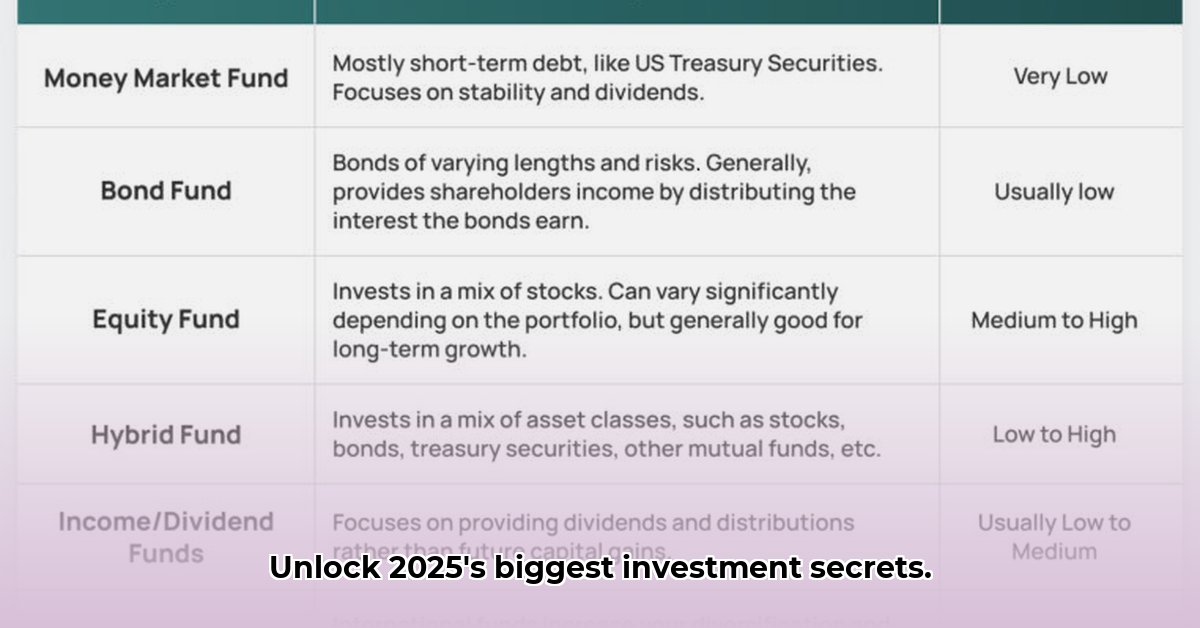
International Growth Mutual Funds: Your Passport to Global Growth
Thinking about diversifying your investment portfolio beyond the US? International growth mutual funds offer a compelling opportunity to tap into the burgeoning growth potential of global economies. This guide provides a practical framework for selecting the right funds and building a globally diversified portfolio. For example, consider exploring US domestic index funds like the American Century S&P 500 Index Fund as part of a diversified strategy.
Why Invest in International Growth Funds?
Investing internationally isn't just about risk diversification; it's about accessing a broader range of lucrative investment opportunities. Many global economies are poised for significant expansion, presenting attractive returns that may be unavailable in the domestic market. But with numerous options, how do you select the best fit?
Consider your investment portfolio as a carefully cultivated garden. A single plant, however robust, is vulnerable to disease or harsh weather. Similarly, a solely domestic portfolio is vulnerable to domestic economic downturns. International funds diversify your holdings, spreading your risk and potentially boosting your returns. A well-diversified portfolio, much like a thriving garden, is resilient, adaptable, and more likely to yield a bountiful harvest.
Did you know that emerging markets often outperform developed markets over the long term? This underscores the importance of properly allocating a portion of your investment portfolio to the growing economies around the globe.
Decoding the Ratings and Key Factors to Consider
Morningstar ratings offer a valuable benchmark, though not a definitive answer, when evaluating international growth funds. A high rating, such as five stars, generally indicates strong and consistent long-term performance. But Morningstar ratings are just one piece of the puzzle.
Here are other crucial factors to consider:
Geographical Diversification: A truly diversified fund avoids concentrating investments in a single country. Ideally, it should spread investments across numerous developed and emerging markets in regions like Europe, Asia, and Latin America to mitigate risk associated with any single region's economic performance.
Investment Approach: Understand the fund manager's philosophy—growth vs. value stocks. Growth stocks generally possess higher risk and return potential; value stocks may offer stability with potentially lower growth. Your risk tolerance should drive this selection.
Cost-Effectiveness: The annual expense ratio, or management fee, directly impacts your returns. Opt for funds with lower expense ratios to maximize your gains.
A Step-by-Step Guide to Smarter Global Investing
Investing in international growth funds doesn't require an advanced financial background. This step-by-step guide simplifies the process:
Assess Your Risk Tolerance: Are you a conservative investor prioritizing safety or a growth-oriented investor willing to accept higher risk for potentially greater returns? This is fundamental in selecting the proper investment vehicles.
Define Your Investment Timeline: Short-term goals (e.g., a down payment) require lower-risk investments, while long-term goals (e.g., retirement) afford greater risk tolerance.
Utilize Research Tools: Morningstar's fund screener 1 allows you to filter funds based on criteria like ratings, geographic focus, and expense ratios, streamlining your search for suitable funds.
Scrutinize Fund Details: Examine the fund's fact sheet, including its investment strategy, expense ratio, and past performance (bearing in mind past performance doesn't guarantee future results).
Compare and Contrast: Compare the key characteristics of your top choices before investing. This comparative analysis ensures the most suitable fit for your unique needs.
Mitigating Risks: A Balanced Approach
International investments inherently carry risks, including geopolitical instability, currency fluctuations, and market volatility. However, diversification can greatly reduce these risks. Similar to asset diversification, geographic diversification reduces the impact of any single market's underperformance.
| Risk Factor | Mitigation Strategy |
|---|---|
| Geopolitical Uncertainty | Diversify across multiple developed and emerging markets. |
| Currency Fluctuations | Consider funds that hedge against currency risk. |
| Market Volatility | Maintain a well-diversified portfolio across asset classes. |
Building a Robust Portfolio: The Core-Satellite Strategy
Employing a core-satellite approach improves portfolio performance. Start with a core holding of a top-rated, large-cap international growth fund for stability. Then, add satellite holdings—smaller, more specialized funds focusing on emerging markets or specific sectors—to capture higher-growth potential. This approach balances stability and targeted growth.
Remember, investment decisions should never be taken lightly. Always conduct thorough research and consider seeking professional financial advice if needed. However, don't let potential risks deter you from exploring the opportunities offered by international growth funds. Smart diversification and strategic planning can significantly improve your long-term financial success.